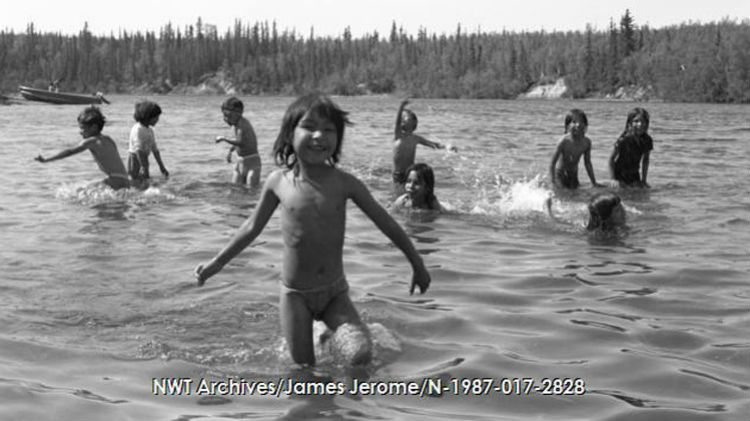James Jerome, one of the top NWT photographers of the past century, died tragically in 1979 at the age of 30.
When his house in Inuvik caught fire, Jerome could not be saved – but some of his photos were rescued from the ruins.
Nine thousand images were donated to the NWT Archives, where staff have worked tirelessly to restore those damaged in the fire and preserve them for future generations.
Erin Suliak is a senior archivist who has worked with Jerome’s extensive collection. Here, she picks out some of her favourite James Jerome photos from 1970s Gwich’in fish camps.
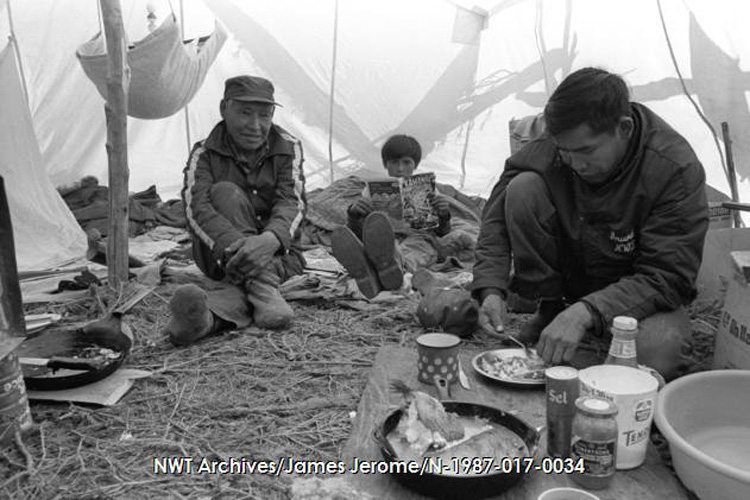
This is a very exciting collection for me – one that I worked with for over a year and one that I’m so happy to share with others.
James was a Gwich’in photographer for whom we did a massive project in 2008 and 2009, in partnership with the Gwich’in Social and Cultural Institute. It was through this partnership that we were able to uncover an enormous wealth of photography that he made in the late 70s, revealing an amazing cultural legacy.
After the fire James’s partner, Elizabeth, brought these photos to the Prince of Wales Northern Heritage Centre, where she deposited them in trust for their son, Thomas. After they were transferred to the NWT Archives, we were able to go full-bore on the conservation and treatment of these priceless negatives, and do some real, thorough description work.
Some of the damage was quite dramatic. If I pulled out a sample to give you an idea of what we were sometimes dealing with, you would see some black-and-white negative strips that had just completely melted – you cannot distinguish anything.
However, other strips were not damaged as badly. In concert with the conservation section at the Prince of Wales Northern Heritage Centre, we performed extensive conservation work on them: flattening them out, stabilizing them and washing them. Fortunately for us, negatives can be quite durable and we were able to rescue quite a few.
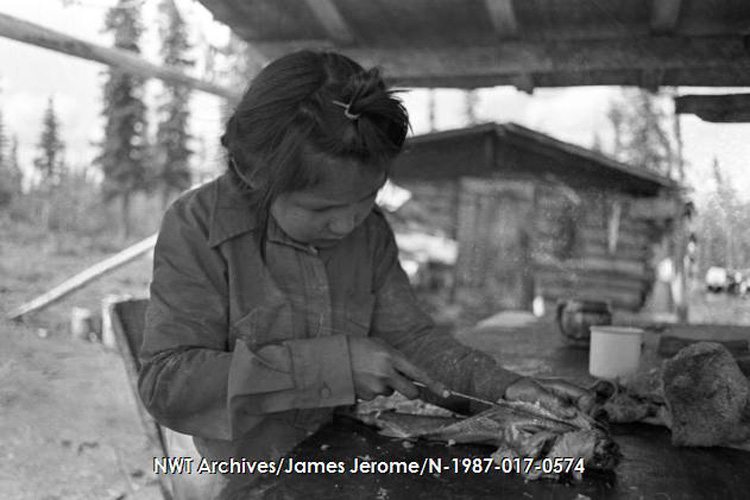
If you browse through the collection, you will see that some of the images are not top-notch for clear. They might be grainy, there might be strange patterns of smudges on them. But it’s the content that makes them so priceless, so we did the very best that we could to preserve them.
From what we understand, James had been a photographer since the age of 12, when he was given a camera by his mother. After he got a welding certificate and training down south, he came back and would spend as much time as he could doing photography. He ended up working for the Native Press newspaper and he also did freelance work.
He embarked on a project of detailing life on the land, especially in the Gwich’in settlement region. He spent several summers – 77, 78, 79 – on the rivers in the region, taking photographs at fish camps and in communities.
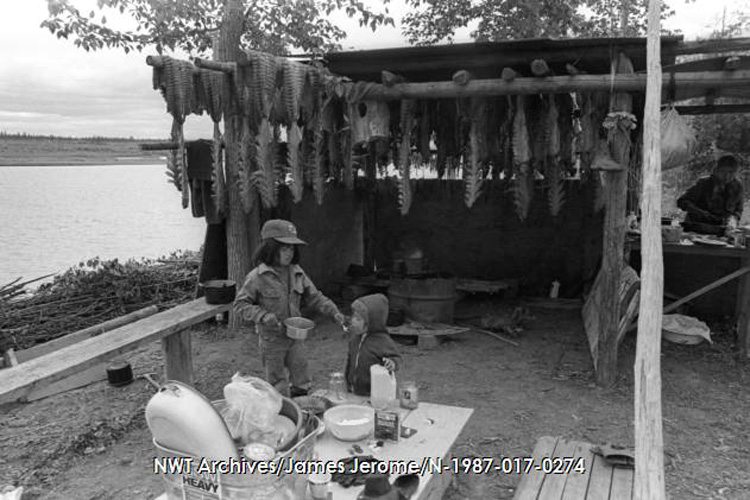
The fish camp series is a really important series but it’s not the only one – he took photographs of life in other communities, there’s a great series of photos from the Muskrat Jamboree in Inuvik, and he went to the BB King concert in Yellowknife in the late 70s.
He seemed to be a roving photographer, but it’s plain that he was concentrating on his culture and heritage. He took photos of Elders doing the work that Gwich’in are so well-known for, especially working on and catching fish in the fish camps. Those photos contain a wealth of information.
A personal highlight of mine is his pictures of children. A lot of these photos are of children at fish camps – you can see them with their mothers, aunties, uncles and grannies, out on the land. They’re such wonderful, detailed photos.
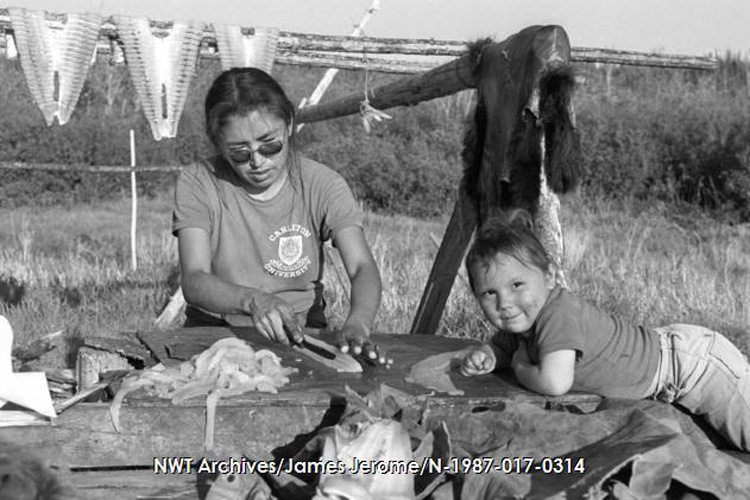
Here we have Alestine Andre with her niece at their fish camp in Tree River, cutting fish. Lisa is leaning on the table while her aunty cuts fish and gets it ready to dry – you can see the rack behind Alestine. There are all sorts of details.
We did an identification project where we went up to Tsiigehtchic and Fort McPherson in partnership with the Gwich’in Social and Cultural Institute so we could get some good identifications. We would put a photo on the wall and ask the Elders: who is this? Where is it? What are they doing?
On Facebook: NWT Archives
That’s when Alestine pointed out the bear skin and told us the bear had been hassling the camp that year – they shot it a couple of days before James Jerome showed up. That level of information is so neat, and I was able to ask questions that I don’t normally get to ask.
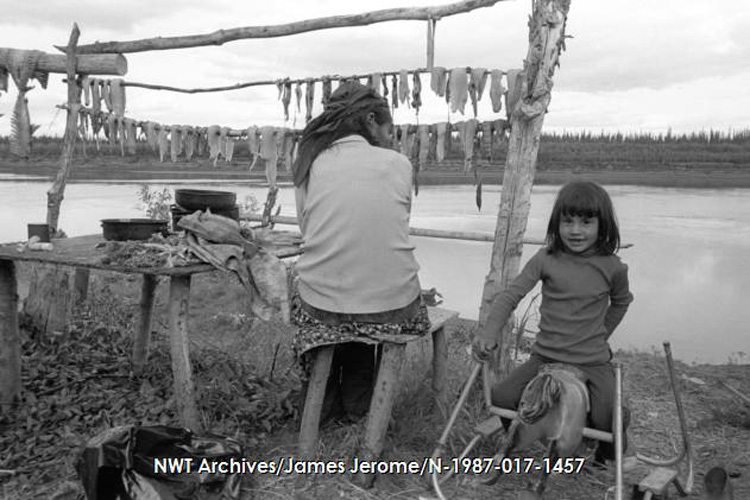
This is Annie Vaneltsi’s fish camp close to Shildii Rock and Kimmy Vaneltsi is sitting backwards on a rocking-horse toy – but we were also able to talk with Elders about what Annie has on the table. It’s a bundle of fish nets she is using to clean her work station.
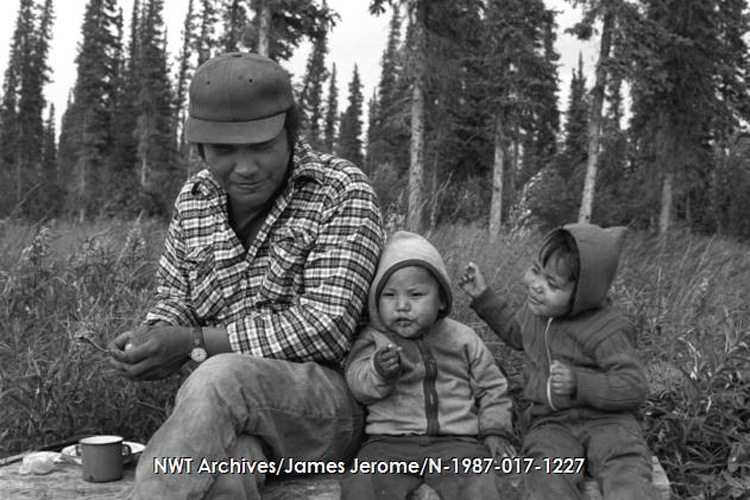
It’s not just children at fish camps. We have a picture of Freddy Jerome, who was James’s brother, and Freddy’s children. They’re sitting by the side of the river, having something to eat.
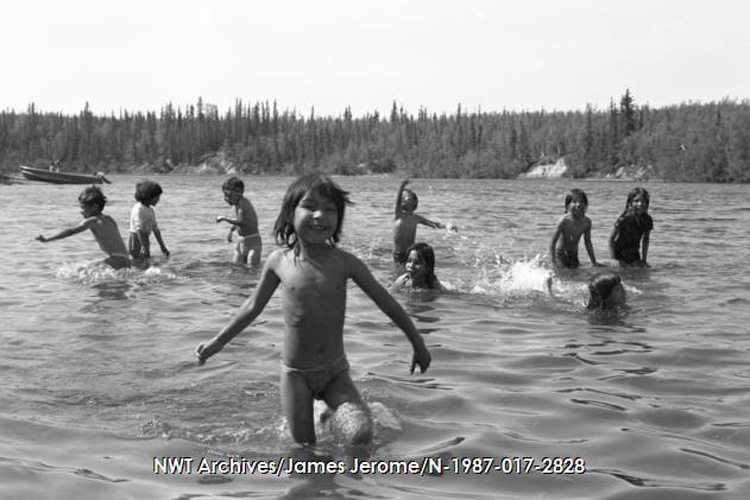
This lovely photo of all the children jumping in the river, swimming and playing, is taken from a series where James went to JC Catholique’s wedding at the Snowdrift River in – I believe – 1979. The expressions of all the people, the comfort, it’s not posed. Everything is just so natural. He was a very talented photographer, able to capture these moments and times.
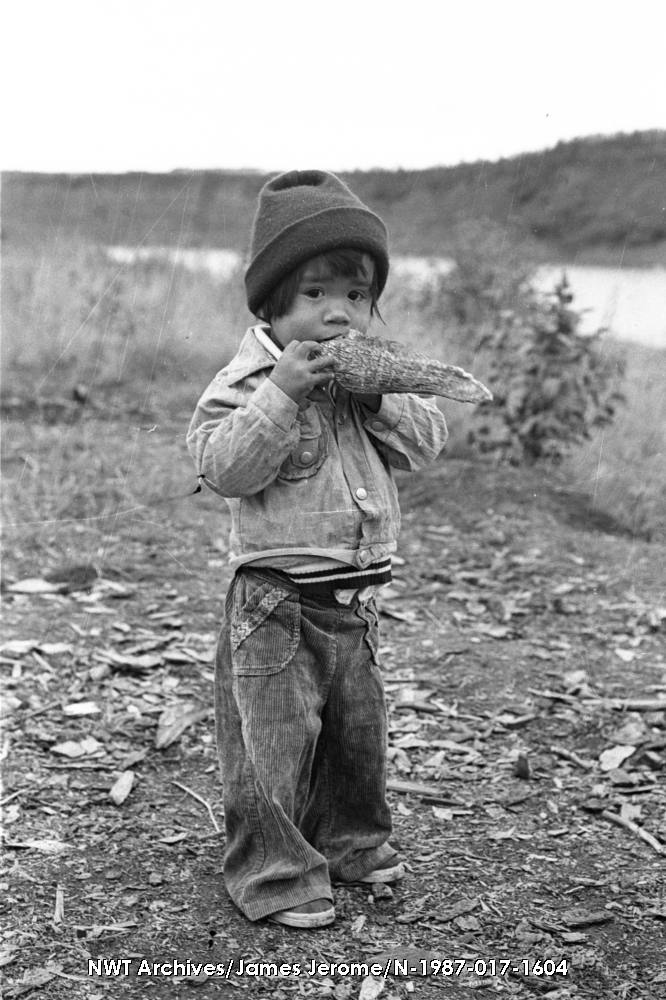
It’s hard to convey how important these photographs are. They are photos by an Indigenous photographer at the top of his game, who was very conscious of his role as a documentary force. Before he passed away, we know he was working on a photo project to document Elders in the Mackenzie Valley.
Previously in this series: Halloween in 1950s Yellowknife
More: Visit the James Jerome web exhibit
The late 70s was an exciting and important time in the NWT’s history – Indigenous rights are coming to the fore, organizations are taking hold and speaking out. Power at the Legislative Assembly is changing, moving away from the commissioner and towards representative government.
James Jerome’s photos capture part of that excitement, that change, the pride.
It’s not to say that photos taken by visitors aren’t important, but they are an outsider’s perspective. This is an insider’s perspective and it is incredibly precious to us.
Erin Suliak was speaking with Moose FM’s Ollie Williams.



